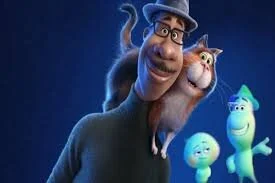The Power of Language - Visual Thinking and Idioms
/This year at TMH, in addition to reviewing the language and vocabulary of emotion, we have been providing exercises that are connecting the visual skills we teach with the power of language. The English language is rich with idiomatic expressions, essential for children to understand in order not to misinterpret what other kids are saying to them. At their best, idioms expand and enrich a child’s understanding of abstract thinking and figurative language. Our hope is that there is generalization to comprehension skills in literature.
Socially, all age groups use idioms and because idioms are easier to understand than to produce, our focus is simply on understanding. Conversations are always challenging but when they are colored with idiomatic expressions they are that much more difficult. While children are working toward an understanding of what is being said, those students who are inflexible, rigid and are “black and white thinkers”, may benefit from considering that what is said is not always meant.
On a deeper level, this may be problematic if it resonates feelings of insecurity, inconsistency, fear of change and lack of fair play, all hallmarks of social difficulty. The use of visual learning, helps children pair pictures with phrases and begin to see the humor in these expressions making them more easily understood. Therefore, we are beginning by providing 10 of the many idioms kids should know and through our visual arts program, allowing children to illustrate these sayings. We hope to make a book for each child to have. i.e. “Don’t cry over spilled milk”, or, “You’re in a pickle”, “Foot in mouth”, “It’s raining cats and dogs”, and (my favorite) “Go to the head of the class”.
Proudly each week, I have been continuing to bring to TMH, pictures, New Yorker Magazine covers and photographs as part of our Meeting House-Chat warm up activity. The children readily settle in to participate in this seemingly simple “game”.
The rules are these:
Round 1. Name one thing that you see
Round 2. What do you think the artist is trying to convey?
Round 3. Can you defend or substantiate your idea?
The topics and subjects we have covered over the years are so varied and enriched that I wouldn’t be able to recount all of them in this article so suffice it to say, steering clear of inappropriate content, politics and religion, we’ve done it all. Each week I am amazed by the insight, the details and the care with which the children participate. I would even dare to say the staff is now looking at things differently as well!
Teaching and exercising visual thinking is apparently not a new idea, as I came across an article in the New York Times from 2015, which outlined exactly what we are doing. I’d like to summarize the significance of the exercise and the impact on social emotional intelligence:
Be a detective. Honing visual skills helps children scan a situation or a room and more quickly assess the situation. This makes them less likely to miscue socially. It encourages eye contact.
Practice regularly. This helps our students learn the benefit of repeat study, (transferring to schoolwork.) It is also a forum for children to take the risk of expressing an opinion or idea. The children listen to what others have to say and learn to incorporate others ideas.
Learn open-ended thinking as opposed to right and wrong. What’s going on in this picture? What makes you think so? Can you say why you thought so? Apply these questions to other areas of your life.
Notice details, details, details. Enough said?
Work within a team. Build on others ideas.
Expand your knowledge of the world and then use the knowledge as a conversation starter. Get in the mix at the lunch table.
Learn and consider another point of view. A skill critically important for successful socialization.
Finally, throughout our exercises we are connecting the visual skills we teach with the power of language. Please feel free to make this exercise your own. It doesn’t cost an arm and a leg, you don’t have act like a deer in the headlights, you can simply take a stab at it and give it the old college try!
Best to all,
Jackie Covell





















